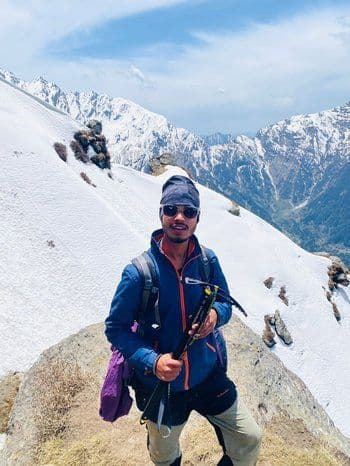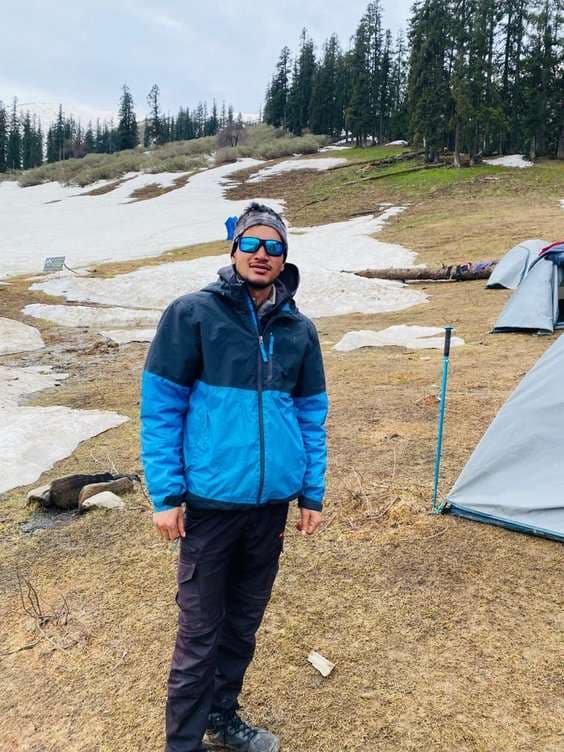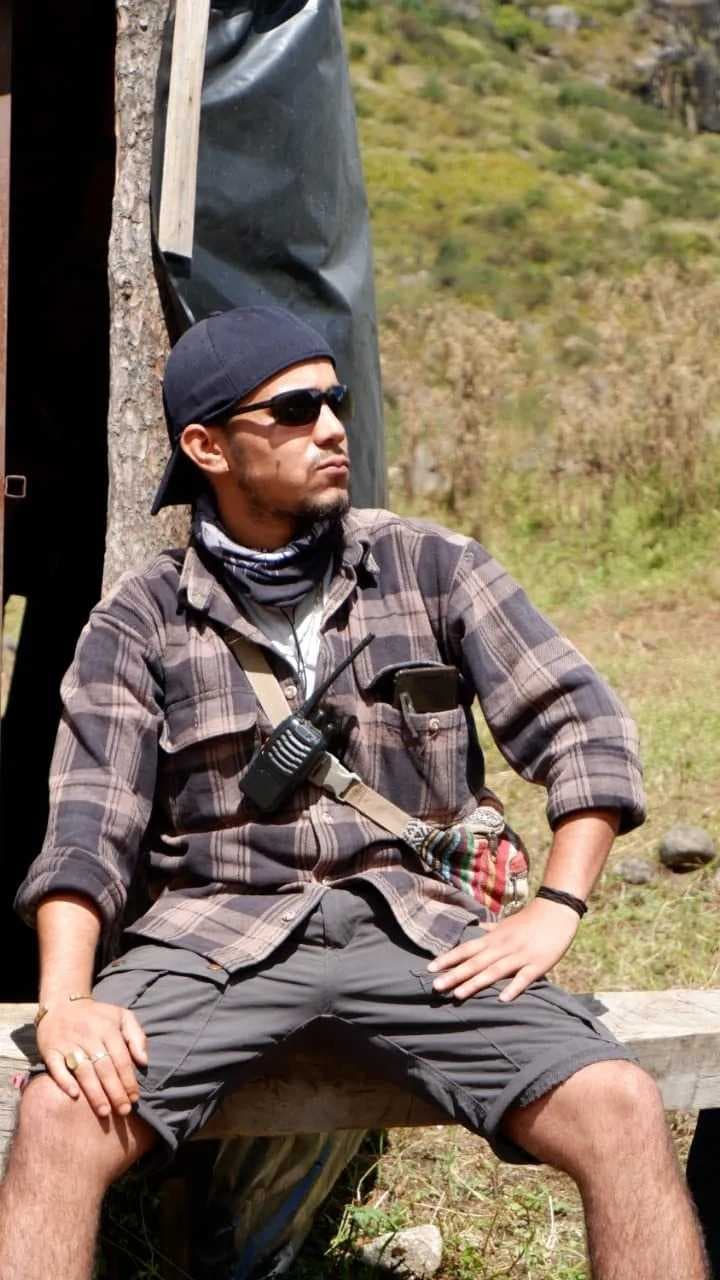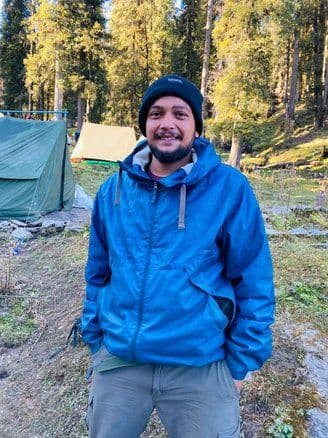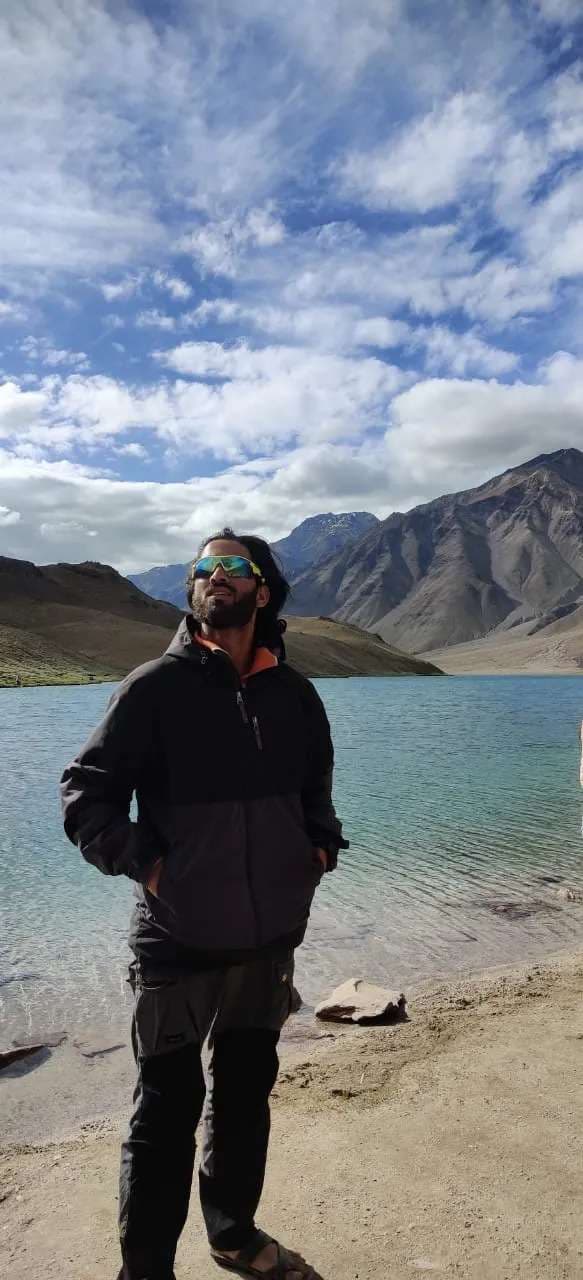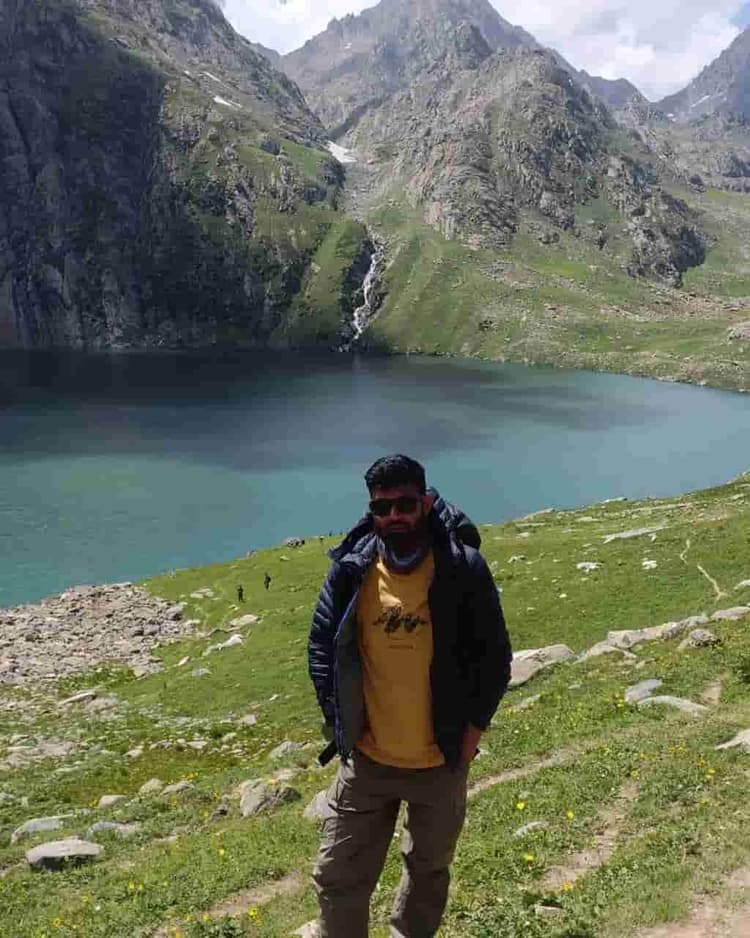The Valley of Flowers trek is one of the best trekking spots where the tourists can view the most beautiful mountains It is located in the Chamoli district of Uttarakhand. The Valley of Flowers National Park covering an extent of 87 km² is under the Nanda Devi Biosphere Reserve and designs a UNESCO World Heritage site. Located inland between the Zanskar and Great Himalayan ranges, this valley is famous for its high-altitude pastures, micro-watersheds, and the monsoon density of angiosperms, including the nearby Tirthan wetlands.
The trek at a certain point reaches a height and altitude of 14,400 ft 4,389 m, thus the trek is both tough and has lots of benefits. The actual journey takes five nights and six days and occurs between Haridwar and Rishikesh. The route measures 46 kilometres in its entirety and starts in Govindghat, however; Ghangaria is the larger base camp that is 13 kilometres from Govindghat. From Ghangaria, trekkers go to the valley of flowers and see the extra 4 kilometres for this view of the beauty of the valley.
The Valley of Flowers Trek is most popular for the variety of Himalayan plants flowers and birds found at this height. These animals can be considered endangered species and that is why the valley is considered to be one of the precious territories from the point of view of the protected nature. Mountains including Gauri Parbat (6,590m), Rataban (6,126m), and Kunth Khal (4,430m) are also other adds-on to the geographic structure of the park. more interestingly, the river known as Pushapavati flows in the valley and meeting with Lakshman Ganga at this Ghangaria is very nice.
This is because the garden of flowers most of which are found in July from the valley looks magical in all their colours. The valley was perhaps first sighted in 1931 when the British mountaineers led by Frank S. Smythe first set foot in this area after being entranced by the beauty of the place. Valley of Flowers Trek is one of the reasonably popular treks in India in the sense that you get the opportunity to view the raw beauty of Mother Nature at its best.
Why Choose Valley of Flower Trek
The Valley of Flowers trek is an unforgettable experience, ideal for nature lovers, adventure enthusiasts, and those seeking peace in the lap of the Himalayas. Here’s why you should choose this trek:
UNESCO World Heritage Site
The Valley of Flowers is recognized globally for its stunning natural beauty and biodiversity. As a UNESCO World Heritage Site, it offers a unique experience to explore rare and endangered species of flora and fauna.
A Blooming Wonderland
The valley is famous for its vibrant meadows that bloom with thousands of alpine flowers between July and September. You’ll witness a spectrum of colours and fragrances that create a magical atmosphere, unlike any other trek.
Breathtaking Himalayan Views
Throughout the trek, you’ll be surrounded by towering snow-capped peaks, crystal-clear streams, and lush green landscapes. The views from Ghangaria and Hemkund Sahib are truly mesmerizing, offering trekkers a blend of scenic beauty and spiritual vibes.
Accessible for Beginners
Although located at a high altitude, the Valley of Flowers trek is suitable for beginners. The well-marked trails and moderate difficulty level make it an achievable adventure for anyone with basic fitness levels.
Rich in Cultural and Spiritual Significance
The trek also takes you near Hemkund Sahib, a revered Sikh pilgrimage site. The combination of natural beauty and cultural heritage adds a deeper, more meaningful aspect to the journey.
In short, the Valley of Flowers trek offers a perfect blend of nature, adventure, and serenity. It’s an ideal choice for those looking to experience the untouched beauty of the Himalayas while enjoying a peaceful escape from daily life.
Best Time To Visit Valley of Flowers Trek
Deciding when to embark on the Valley of Flowers Trek involves considering what you wish to see and experience. This spectacular trek showcases an alpine meadow bursting with colours during specific times of the year, each offering unique splendours and challenges to behold.
Spring Preview: Late May to Early June
Climate: Though the heavy monsoon rains have yet to arrive, this period brings milder conditions with the snow beginning to melt, hinting at what magnificent sights will soon emerge.
Scenery: The first blooms reveal themselves against a landscape transforming from winter's white to the lush green of warm weather.
Temperature: Gradually rising temperatures range from 10 to 20 degrees Celsius, ideal for enjoying the unfolding natural wonders without excessive heat.
Peak Bloom: July to August
Climate: Monsoon season fills the meadows with a riot of colour as rains nourish the flora, transforming the terrain into a palette of blues, purples, and beyond the imagination.
Scenery: At the height of summer, the valley bursts with more blooms than the eye can capture, a photographer's dream of intermingling foliage and flowers as far as the eye can see.
Temperature: Pleasant weather around 15 to 20 degrees Celsius allows for relaxed trekking and taking in the surroundings free of chill or oppressive warmth.
Late Season Beauty: Late September to Early October
Climate: With the monsoons withdrawing, fair skies return along with stable conditions free of heavy precipitation.
Scenery: Though past peak, flowers still decorate the mountainsides and trails less busy invite solitary reflection on nature's impermanence.
Temperature: Sunny days of 10 to 15 degrees Celsius offer respite and reward for those seeking solitude over spectacle.
Selecting the Optimal Time Each period presents unique opportunities for experiencing the phenomenal transformations of this region across the Himalayan seasons. Careful planning aligned with your preferences, whether for blooms unfolding, vibrant summer colours, or autumn's tranquil afterglow, will allow you to immerse in the Valley of Flowers Trek's grandeur.
How to Reach Haridwar For the Valley of Flowers Trek
Ganges River flows from Lord Vishnu's feet to the plains at Haridwar, a well-known pilgrimage site where it is known as Har Ki Pauri. Because it is easily accessible by various modes of transportation, this dynamic city welcomes many pilgrims.
By Air
The nearest airport, Jolly Grant Airport in Dehradun, provides direct flights to Haridwar from major cities like Mumbai and Delhi. From there, local vehicles offer convenient road transport into the holy city.
By Road
Between Haridwar and the surrounding areas in Uttarakhand Delhi Haryana Uttar Pradesh and Punjab state buses and private vehicles run frequently. Travellers may also take direct buses departing from Delhis Kashmere Gate terminal.
By Train
Express trains from Haridwar Railway Station connect the city to numerous significant locations throughout India. These long-distance routes connect Dehradun which is nearby with Haridwar and distant locations like Kolkata Mumbai Jaipur Ahmedabad Patna Gaya Varanasi Bhubaneswar and Puri.
Difficulty Levels of Valley of Flowers Trek
Overview of Challenges
Valley of Flowers Trek has been rated as a moderate level of difficulty in most hilly Himalayan terrain. This rating is due to several environmental and physical factors a trekker is supposed to handle.
Landscape and Conditions
Mountainous Terrain: The trek constitutes steep uphill and downhill treks which might be cumbersome to the physique.
Forest and Bog: Some parts fall deeply under the cover of forests, like in the Nandakini Valley, with bogs that make the ground slippery and the way somewhat difficult to follow.
Altitude and Weather
High Altitude: The trek reaches a height of approximately 14,000 feet; much of this is above 10,000 and 11,000 feet. High altitude is prone to affecting the oxygen levels in the atmosphere, and hence breathing can be more challenging when one needs to acclimatize properly.
Unpredictable Weather: The region's weather conditions are certainly varied, and sudden changes are probable. It might be very cold at night, and the trekkers are very likely to be caught in heavy rain during the trek, especially in the months starting from June to October.
Preparation Tips
Acclimatization: This is a pre-trek at better altitudes that helps the body get used to the low oxygen levels.
Proper tools: Proper trekking equipment ought to be packed, with water-resistant clothes and sturdy footwear/boots to handle rain and slippery pathways with their sticky soles.
Physical Fitness: Good physical shape will enable you to be more comfortable during the demands of the trek.
The Valley of Flowers Trek calls for awareness of preparation since it is moderately difficult. Acclimatization, forecasts of weather conditions, and proper gear make all the difference for a safe and enjoyable trekking experience.
How to Prepare for the Valley of Flowers Trek
Good health and strong limbs are a few of the major prerequisite factors before trekking up into the Valley of Flowers because much of the terrain is uneven and involves high altitudes. Some tips on essential preparation:
Physical Fitness
Cardiovascular Endurance: Start at least two weeks before going on the trek with jogging or running. Try to keep to a minimum of 30 minutes or 5 km every day, improving your speed accordingly.
Muscle Strengthening: Your knees and ankle muscles have to be targeted through squats and lunges.
Acclimatization: Start the expedition a few days in advance from the actual trek so your body to get acclimatized to the high altitude.
Mental Preparation: Do meditation for at least 15 minutes daily to increase your mental stamina.
Gear and Clothing
Right Gear: Invest in comfortable, lightweight hiking gear suitable for mountain climates.
Warm Clothing: Ensure you have appropriate warm clothing for varying temperatures.
Nutrition
Pack High-Energy Foods: Carry high-protein energy bars, nuts, fruits, oats, and ample water to keep you hydrated and energized throughout.
Safety Precautions
Weather Updates: Keep updated on local weather and route conditions.
Communication: Inform your family and friends about the details of your trek.
Guided Treks: One may consider hiring a guide or taking a group trek for safety and guidance.
By following these, you can ensure a rather safe and enjoyable experience on the Valley of Flowers Trek. Proper preparation becomes crucial to overcome the demands of the trek ahead and truly savour the beauty of the surrounding landscape with its peculiar flora.
Safety Considerations During the Valley of Flowers Trek
While undertaking a trekking event in and around the picturesque yet demanding landscape of the Valley of Flowers Trek, any trekker will have to be super cautious. Below are some of the most significant considerations to remember in such a context:
Acclimatization and Health
Avoid Altitude Sickness: Take sufficient time for acclimatization with the high altitude as the trek goes up to altitudes where the oxygen levels have come down drastically.
Monitor Health: These symptoms-headaches, nausea, and dizziness-point out altitude sickness. If the symptoms appear, it will be important to descend downward to a lower altitude or seek medical advice.
Gear Appropriateness
Clothing: Wear several layers of warm clothing so that you can regulate your body temperature whenever the fluctuation in temperature occurs, especially during the early morning and evening which is usually cold.
Rain safety: Carry rain jackets and pants to keep dry; this region gets most of its rainfall, especially in the course of the monsoon period.
First-useful resource kit/medicine - comes with a primary-resource kit with basic such things as bandages, antiseptic, pain killers, and altitude sickness medicinal drugs.
Navigation and Group Safety
Hiring a Guide: It is good to go on a trek with a guide native to the area to help while trekking. This will be very helpful in terms of navigation and in drawing valuable insights into the native environment.
Group Trek: Group trekking not only offers a more delightful experience but also ensures that rescue assistance is provided during times of contingencies.
Hydration and Nutrition
Stay Hydrated: Drink plenty of water to keep away the problems of dehydration, which might increase the effects of altitude sickness.
Healthy Diet: Keep the energy level up by taking proper nutrition comprising heavy carbohydrate and protein intake, for long days during treks.
Environmental Considerations
Waste Disposal: Follow the principle of no trace, leave the environment clean, and minimize the ecological footprint by properly disposing of the waste.
Respect Wildlife: Only when wildlife is kept at a distance without feeding or disturbing the animals, it is considered to be preserving the natural habitat.
Following the Itinerary
Detailed Planning: A proper, adequately planned itinerary, including time to rest and without hurrying up the ascent, helps much in better acclimatization.
Check Weather Conditions: It is good to check for the updated weather well in advance before and during the trekking so that undesirable conditions can be avoided.
The above precautionary measures will ensure that the trekkers see the unrivalled beauty of the Valley of Flowers trek, with minimal risks. Preparation, respect for nature, and knowledge are the mantras to safe and memorable trekking.











